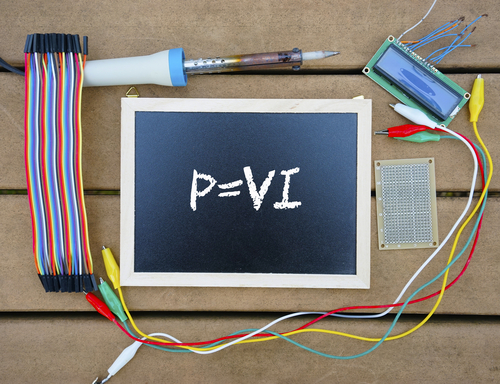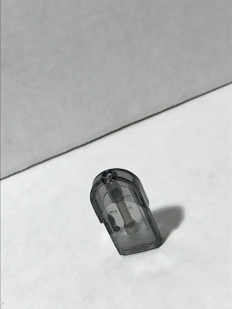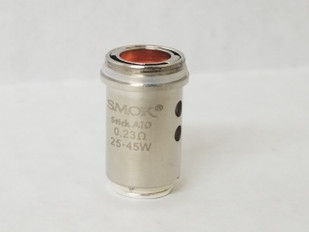- Home
- The Vape Mall Blog
- What is Output Voltage and Output Current and are They Important to Know in 2024?
What is Output Voltage and Output Current and are They Important to Know in 2024?
Posted by on
 Vapers enjoy looking at and trying out certain vaping
device. And, did you know that some
vapers look at a device’s output current and output voltage? This may not seem crucial to most, as say,
battery capacity, but like battery capacity, output current and output voltage
are indicators that contribute to a device’s performance, since each will determine
the overall operation of power it can handle. However, a device’s efficiency and other
conditions can impact these two things, which is what we will be discussing
here today.
Vapers enjoy looking at and trying out certain vaping
device. And, did you know that some
vapers look at a device’s output current and output voltage? This may not seem crucial to most, as say,
battery capacity, but like battery capacity, output current and output voltage
are indicators that contribute to a device’s performance, since each will determine
the overall operation of power it can handle. However, a device’s efficiency and other
conditions can impact these two things, which is what we will be discussing
here today.
Getting to Know Output Voltage and Output Current
Output voltage and current are two important concepts in electrical and electronic systems, each referring to different aspects of how electrical power is delivered from a source to a load.
ØOutput Voltage (V): This is the electrical potential difference provided by a power source. The voltage determines the potential energy per unit charge available to drive electric current through a load. In simple terms, voltage can be thought of as the 'push' that drives the flow of electrons in a circuit.
ØOutput Current (I): This is the flow of electric charge and is measured in amperes (A). Current represents how many electrons are flowing through the circuit. In a given circuit, the amount of current depends on the voltage provided by the power source and the resistance of the circuit.
The interplay between voltage and current is crucial:
- Power Delivery: Power (P) in an electrical circuit is the product of voltage and current (P = V x I). This means the amount of power delivered to a load depends both on the voltage level and the amount of current flowing.
- Ohm’s Law: Ohm's Law states that V = I x R, where R is resistance. This implies that for a given resistance, an increase in voltage will lead to an increase in current, and vice versa.
- Device Compatibility: Devices are designed to operate at specific voltage and current levels. Providing too high a voltage can damage components, while too low a voltage might not be sufficient to operate them. Similarly, a current that's too high can cause overheating and damage, while too low a current might not be effective.
- Efficiency and Safety: The right combination of voltage and current is essential for efficient operation of electrical devices. It's also crucial for safety, as incorrect voltage or current can lead to short circuits, overheating, or electrical fires.
- Applications Vary: In practical terms, different devices require specific output voltages and currents to operate correctly. For instance, a mobile phone charger and an industrial motor operate at vastly different voltage and current levels.
Understanding the impact of output voltage and current is crucial for designing, troubleshooting, and safely using electrical and electronic systems.
Why Do Some Vaping Devices Have Output Voltage and Output Current?
Vaping devices, particularly the more advanced ones, often feature output voltage and current settings to provide users with more control over their vaping experience.
Reason #1: Customization of Experience
These settings allow users to customize their vaping experience. By adjusting the voltage and current, users can control the amount of vapor produced, the intensity of the flavor, and the strength of the throat hit. This is particularly appealing to experienced vapers who have specific preferences:
- -Higher voltage generally produces more vapor and a stronger flavor.
- -Lower voltage results in a milder experience.
Reason #2: Compatibility with Different Atomizer Coils
Different atomizer coils, which are the heating elements in vaping devices, have varying resistances. Adjusting the voltage and current ensures that the device is compatible with these different coils. For instance, higher resistance coils might require lower voltage to prevent burning, while lower resistance coils might need higher voltage for optimal performance.
Reason #3: Battery Life Management
Adjusting these settings can also impact battery life:
- -Lower voltage and current settings usually consume less battery power, which can be beneficial for prolonged use without recharging.
- -Higher settings can drain the battery faster to put it simply.
Users can balance their preferred vaping intensity with the need for longer battery life.
Reason #4: Safety
Regulating voltage and current can also be a safety feature. You see, advanced vaping devices have safety functionalities/protocols that prevent issues like overheating, short circuits, and overcharging. Hence, that ability to control voltage and current has a part in these safety features, as it prevents the device from operating outside of safe parameters.
Reason #5: Optimizing Flavor and Vapor Production
Different e-liquids can respond differently to various heat levels. By adjusting the voltage and current, users can find the optimal settings for their preferred e-liquid, enhancing flavor and vapor production. Basically, this customization can lead to a more satisfying experience for those who understand how to balance these settings effectively.
How Do You Know if a Vaping Device Has Output Voltage and Output Current?
To determine if a vaping device has output voltage and output current, you typically need to check its specifications or use measuring tools. Here are a few steps you can follow:
1.Check the Specifications: Most vaping devices come with a manual or specifications listed on the packaging or the manufacturer's website. These specifications usually include details about output voltage and current.
2.Use a Multimeter: If you have a multimeter, you can use it to measure the output voltage and current directly. To measure the voltage, set the multimeter to the appropriate voltage range and touch the probes to the output terminals of the vaping device. For current, you might need to set up the multimeter in series with the device, which can be more complex.
3.Built-in Indicators: Some advanced vaping devices have built-in displays or indicators that show the current voltage and/or current settings or outputs.
4.Consult the Manufacturer: If you're unsure and the information isn't readily available, you can contact the manufacturer or refer to their website for technical details.
Online Reviews and Forums: Sometimes, users and reviewers will test and provide this information in online forums or review sections.
 Loading... Please wait...
Loading... Please wait...



















